If you’re a Recreational Vehicle (RV) owner, you’re certainly familiar with the many terms and acronyms used in the industry. But even if you’re just thinking about buying your first RV, it’s helpful to know what all these words mean. That’s why we’ve put together this comprehensive list of RV terminology – so you can be sure you’re up to speed on everything before making your purchase. Happy camping!
General RV Terms
Those who live in or camp in RVs have a certain lingo. Though sometimes confusing to understand the terminology, this FAQ includes explanations of common terms specific to RVs.
An RV chassis is the frame that the rest of the vehicle is built on. It includes the engine, transmission, drive axle, and suspension. The chassis is what makes an RV a motorhome, as opposed to a trailer. A trailer does not have its own engine or suspension, so it must be towed by a separate vehicle. An RV chassis is typically made of steel or aluminum, which makes it strong enough to support the weight of the RV and any cargo or passengers. The chassis is also designed to be durable and corrosion-resistant, so it can withstand years of exposure to the elements. Whether you’re looking to buy a new RV or just want to learn more about how they’re constructed, understanding the basics of an RV chassis is a good place to start.
Shore power refers to the hookup that provides electricity to RVs and camper vans at an RV campground via an external electrical cord. In most cases, shore power is simply a standard 110-volt outlet, but some newer RV models are equipped to handle higher voltage (220-volt) shore power. In addition to providing a source of electricity, external power sources can also help keep RV batteries charged and prevent them from overloading. Also, shore power amperage is important as the amount of power needed can overload some switches. Most campgrounds have higher amperage circuits for RV, your home may have a more limited amperage when connecting to outdoor power outlets.
A gray water tank is a type of storage tank used to collect and recycle gray water. Gray water is defined as any household wastewater that does not contain feces or urine. This includes water from sinks, showers, baths, washing machines, and dishwashers. When used as a standalone unit, gray water must be manually collected and stored in the tank. As long as you aren’t using harmful chemicals it should be fine to dump gray water on the ground or storm sewer. Gray water can also be used for irrigation or other outdoor applications. Grey water tanks are an effective way to reduce water usage and conserve resources.
A black water tank is a container that holds waste water from toilets and other plumbing fixtures. The water in the tank is typically gray or black in color, hence the name. Black water tanks are typically found in homes, businesses, and other buildings where plumbing is present. The tanks are typically made of concrete, plastic, or metal, and they can range in size from small to large. In most cases, black water tanks are connected to the sewer system. However, some tanks are designed to be septic systems, which means they treat and recycle the waste water before it is discharged into the environment. Black water tanks play an important role in the proper function of plumbing systems. Without them, sewage and waste water would build up and eventually overflow, causing health hazards and environmental problems.
A fresh water tank is an essential part of any adventure van. It allows you to store potable water on board, so you can stay hydrated even when there’s no water source nearby. Fresh water tanks come in various sizes, from small portable tanks to larger permanent setups. Most adventure vans have at least one fresh water tank, though some may have multiple tanks for greater capacity. Fresh water tanks can be filled manually or via a hose connection. Some adventure vans also have onboard filtration systems that allow you to fill the tank with non-potable water and then filter it for drinking. Whatever your setup, a fresh water tank is a must-have for any adventure van.
For anyone who has ever taken an RV trip, the term “dump station” is likely to be familiar. These stations are designed for dumping the black tank, which is where sewage is stored on an RV. The black tank must be emptied regularly to prevent odors and sewage from spilling into the RV. Dump stations typically have a hose and a connection for an RV’s sewer system. The hose is used to empty the black tank into the station, and the connection allows the black tank to be rinsed with water. Some dump stations also have pumps that can be used to empty the black tank more quickly.
Dry camping is when you camp without hookups for water, electricity, or sewer. This means you have to be self-sufficient and bring everything you need with you, including water, food, and a generator for power.
Boondocking is a term used to describe camping outdoors without hookups to water, electricity, or sewer. Boondocking can also be called dry camping, and it is often done on public lands like Bureau of Land Management (BLM) property. When boondocking, campers must be self-sufficient, as there are no facilities available for use. This means bringing enough water and food for the entire trip, as well as a generator if electricity is needed. Although it takes some extra planning, boondocking is a great way to enjoy the outdoors without having to worry about reservations or crowded campsites.
Gross Vehicle Weight Rating, or GVWR, is the weight of a vehicle including the weight of the RV itself, any passengers, fuel, and any other cargo. This rating is important because it represents the maximum weight that the RV can safely handle. RV manufacturers use various factors to determine the GVWR of their vehicles, including the weight of the frame, the strength of the suspension, and the size of the tires. Therefore, it is important to consult the GVWR when loading an RV to ensure it remains within the safe weight limit. Exceeding the GVWR can put stress on the RV’s frame and suspension, which can lead to serious damage. In extreme cases, it can even cause the RV to lose control and tip over. Therefore, it is essential to exercise caution when loading an RV and ensure that the weight does not exceed the GVWR.
One important factor to consider is the cargo carrying capacity (CCC) of your RV. This is the maximum weight your RV can safely carry, and includes both passengers and gear. While the CCC may vary depending on the make and model of your RV, it’s important to ensure that you stay within the limit to avoid damaging your vehicle.
One important consideration when driving an RV is the gross axle weight rating (GAWR). This rating indicates the maximum amount of weight that can be safely carried by each axle. RVs are often quite large and can easily exceed the GAWR, so it’s important to ensure that the weight is evenly distributed. Overloading an axle can lead to serious damage, so it’s important to be aware of the GAWR before hitting the open road.
A swamp cooler is a type of air conditioner that uses the evaporation of water to cool air. Swamp coolers are commonly used in RVs and camping trailers, as they do not require a power source other than a water supply. The way a swamp cooler works is by drawing air into the unit and passing it over a wet evaporative pad. As the air passes over the pad, water evaporates from the pad, cooling the air. The cooled air is then blown into the RV or trailer. Swamp coolers are an energy-efficient way to keep cool, as they do not use refrigerants or compressors. However, they are less effective in humid climates, as the air must be relatively dry for evaporation to occur.
A chassis battery is a battery used to start the engine of an RV. It is typically located in the engine compartment and is connected to the starter motor. The battery provides the electrical power necessary to turn the engine over and start the RV. Once the RV is started, the engine’s alternator charges the battery, keeping it topped off. If the RV is not being used for an extended period of time, it is important to disconnect the chassis battery so that it does not become discharged. Otherwise, the RV will be difficult to start when you are ready to use it again. Thanks for asking!
Leveling jacks are devices that are used to level an RV when it is parked. They are made of metal have a base that rests on the ground. The RV is then raised up at one end until it is level, and the jacks are lowered to support the RV in its new position. Leveling jacks can be operated manually or with an electrical motor. Some RVers use them to level their RV before they set up camp, while others use them to make minor adjustments throughout the day. Regardless of how they are used, leveling jacks are an important part of the RVing experience.
Slide outs are sections of the RV that can be extended outwards, creating additional space inside. This can be especially useful when parked in a tight spot, or when trying to avoid obstacles while driving. Slide outs are typically found in the living area and bedroom, and can help maximize the available space. So if you’re considering an RV for your next vacation, be sure to look for one with slide outs!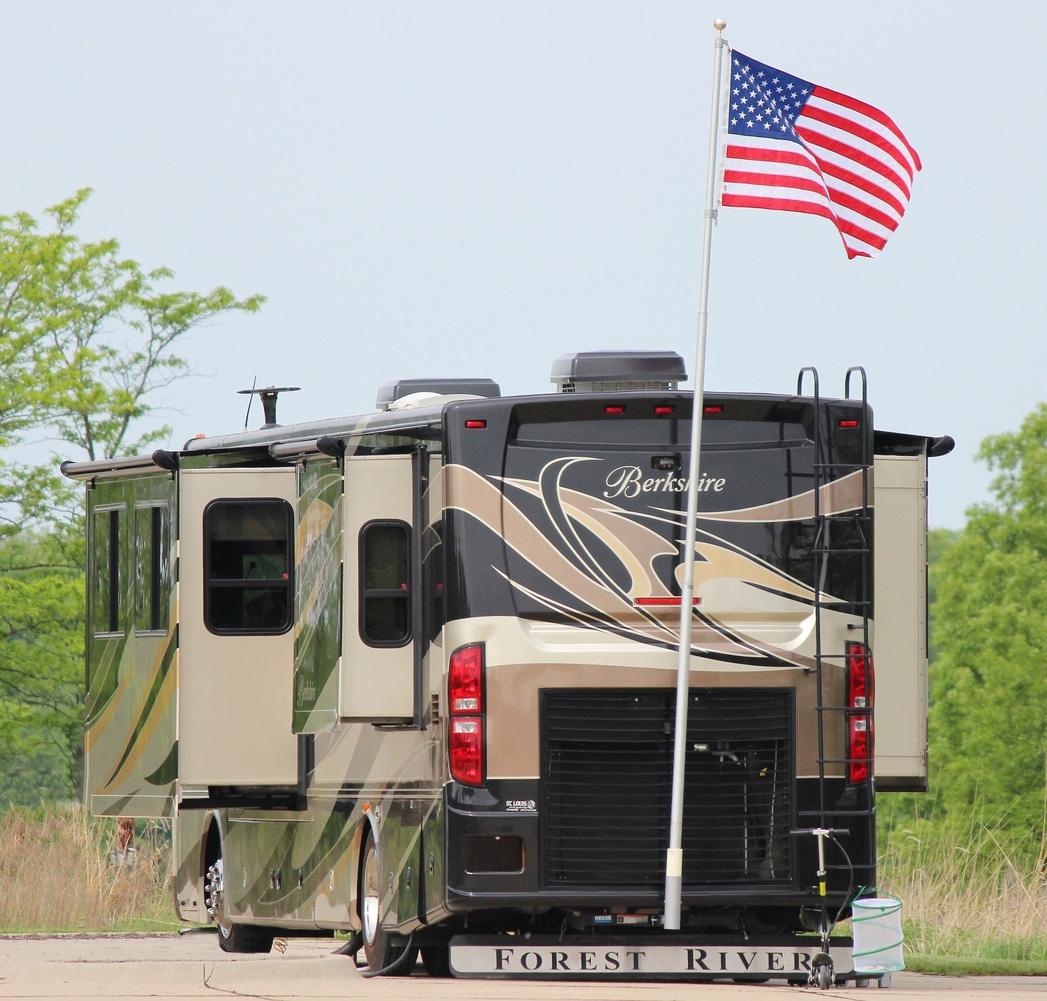
RV trailer brakes are an essential safety feature, providing the stopping power needed to safely tow a heavy RV. There are two types of RV trailer brakes: electric and surge. A controller activates electric RV trailer brakes mounted inside the RV, while surge RV trailer brakes are activated by the RV’s own braking system. Both types of RV trailer brakes use hydraulic pressure to create friction that slows down the wheels. When choosing RV trailer brakes, it is important to consider the weight of the RV and the terrain on which it will be used. For example, electric RV trailer brakes may be more suitable for lighter RVs on level ground, while surge RV trailer brakes may be more suitable for heavier RVs on challenging terrain. Whichever type of RV trailer brake you choose, ensure it is properly installed and maintained to ensure safe stopping power.
Types of RV Vehicles
RV’s can be either self-contained or towed behind a car or truck. The most popular type of RV is the motor home, which offers the convenience of being self-contained and easy to drive. However, RV’s come in many forms, from pop-up campers and vans to fifth-wheel trailers and toy haulers. No matter what type of RV you choose, you’ll enjoy the freedom and flexibility that comes with hitting the open road.
Class A motor homes are the largest motor homes with built-in engines. The bodies of these RVs are 30 to 40 feet long, and weigh anywhere from 13,000 to 30,000 pounds dry. A class A RV usually drives and looks like a bus. Sometimes it is difficult to navigate roads in national parks and other parks with Class A RVs. 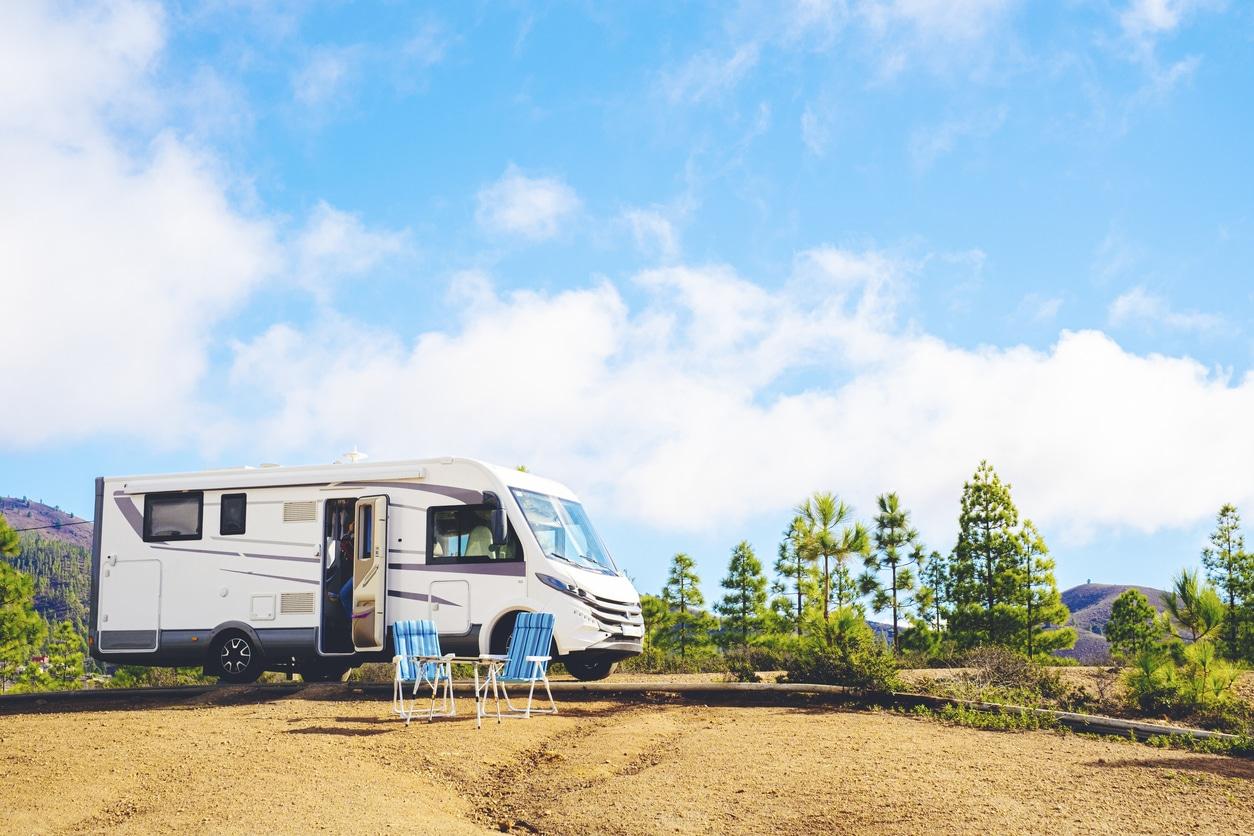
Class B RVs are somewhere in the middle, falling between Class A (the largest) and Class C (the smallest). Class B RVs are typically built on a van chassis, making them more maneuverable than their larger counterparts. They usually have all the amenities of a full-sized RV, including a kitchen, bathroom, and sleeping quarters like the Airstream Interstate 24x. However, they are often shorter in length and have fewer slides (rooms that extend out from the side of the RV). As a result, Class B RVs are a popular choice for those who want to RV without feeling like they’re driving a giant bus.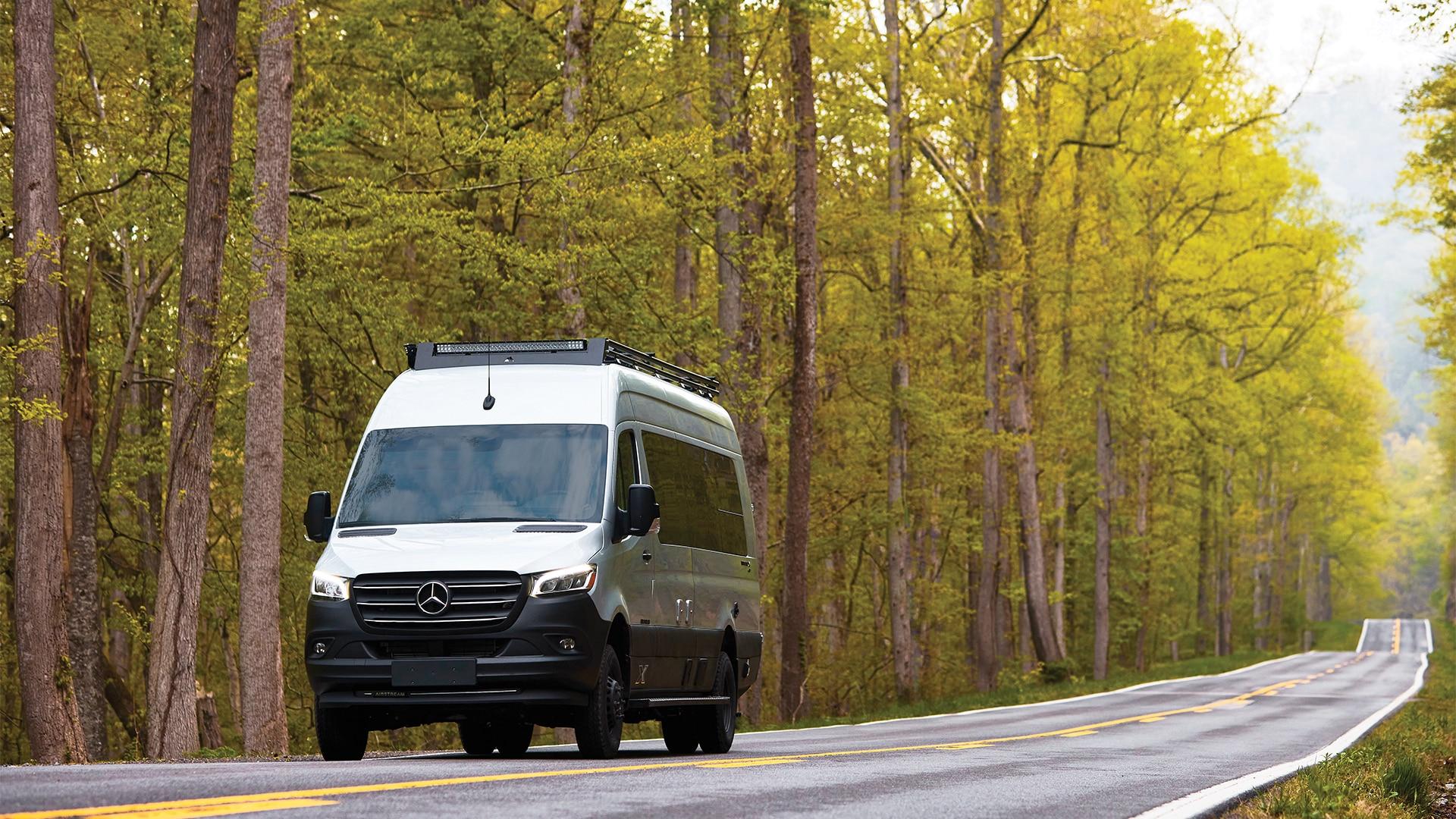
Class C RVs are a type of RV that falls somewhere in the middle, in terms of size and price. Class C RVs are typically built on a truck chassis and range in length from 20 to 30 feet. They usually have a sleeping area above the cab, which makes them a good option for families or groups of friends who want to travel together. Class C RVs typically have all the amenities of a larger RV, but they are more maneuverable and easier to drive than a larger RV. If you’re looking for an RV that is comfortable and spacious, but not too difficult to drive, a Class C RV might be the perfect option for you.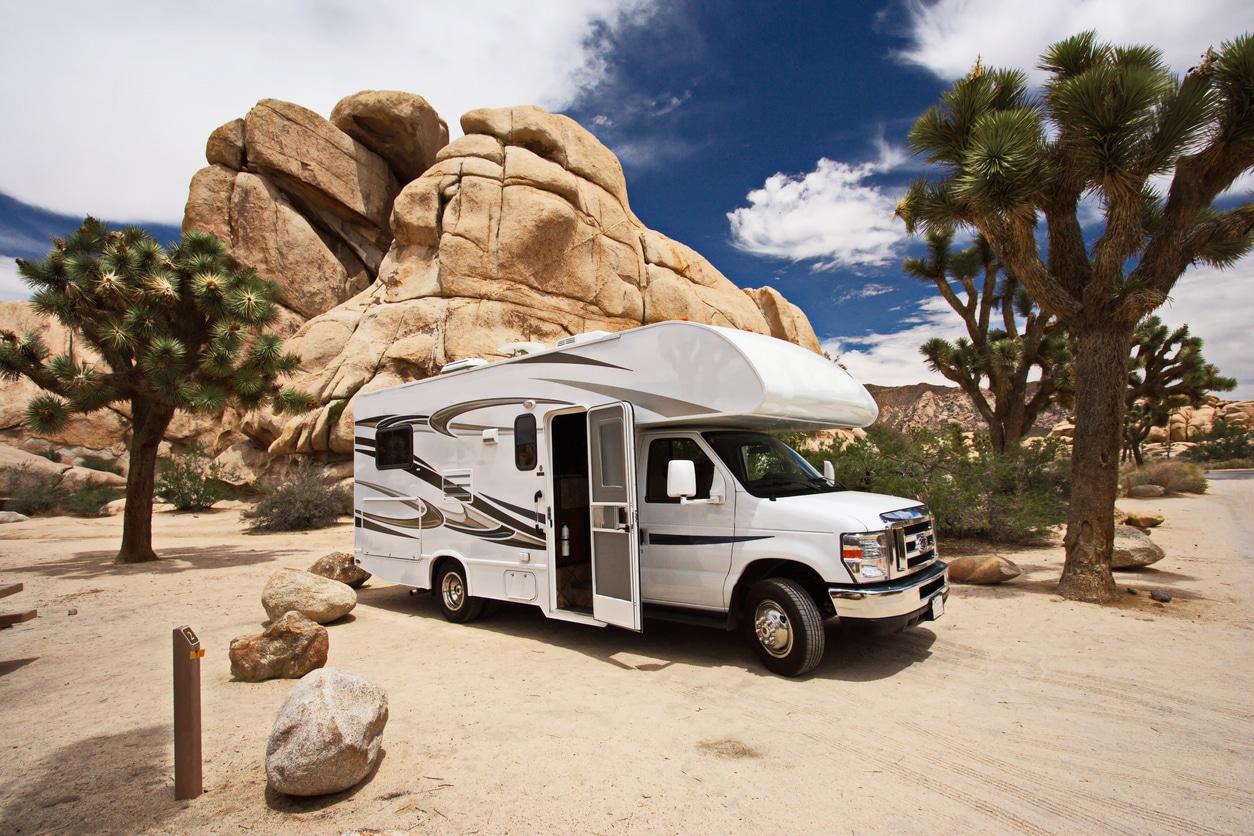
The adventure van is a new type of vehicle that is becoming increasingly popular among young people. These vans are usually based on the Ford Transit or Mercedes Sprinter, and have been designed for comfortable long-distance travel. They typically include features such as bunk beds, storage space, and kitchen facilities, which make them ideal for road trips and camping trips. The vanlife movement has also helped popularize adventure vans, as more people are looking for alternative ways to live and travel. If you’re looking for an adventure van, there are many companies that offer custom-built vans. Or, if you’re handy with tools, you can even convert a regular van into an adventure van. Whichever option you choose, an adventure van can help you explore the world in a unique and exciting way.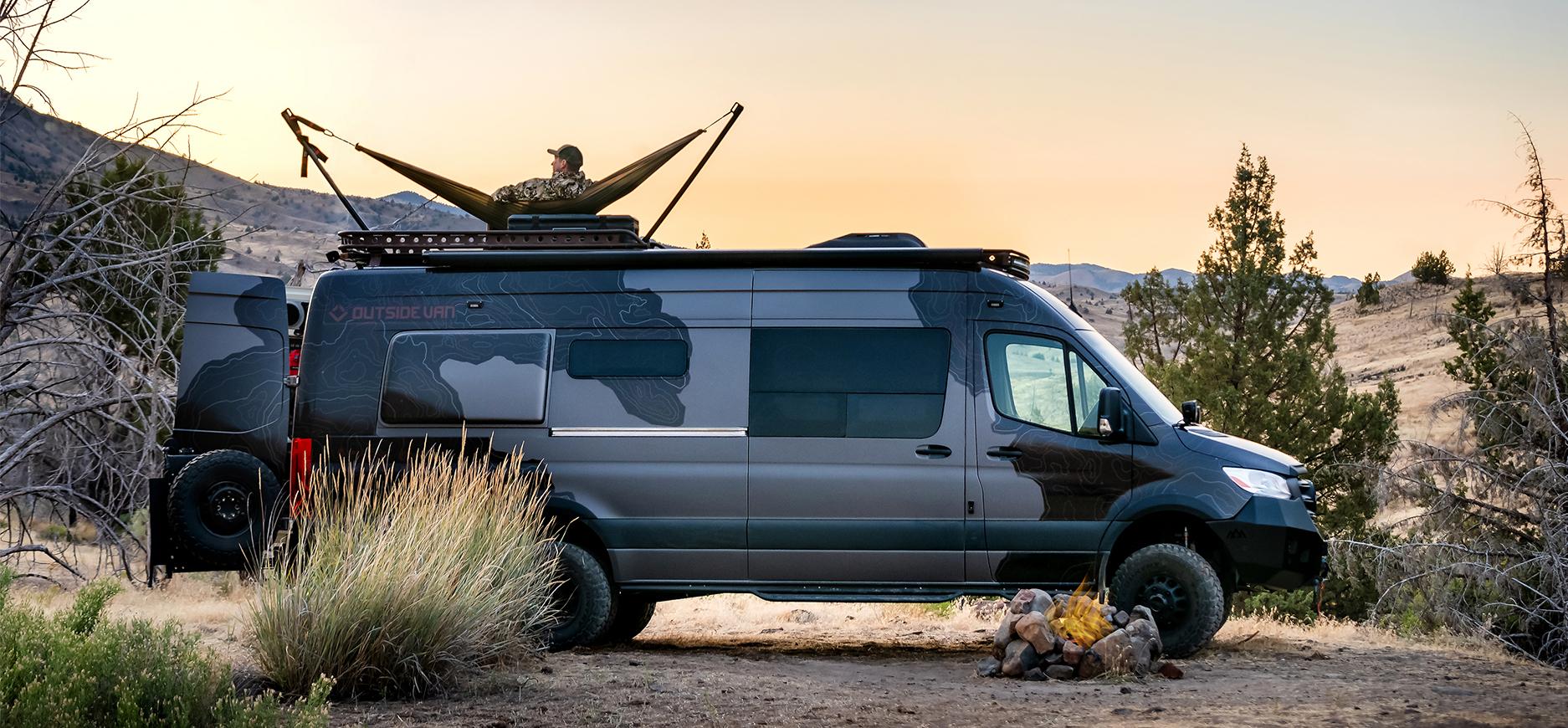
Fifth wheel RVs is a towable RV designed to be towed by a pickup truck with a hitch ball in the middle of the truck bed to receive the fifth wheel hitch. They typically have more living space than other types of RVs. They often have large slide-out sections that create a spacious interior, and usually have all the amenities of a home, including a kitchen, bathroom, and bedroom. If you’re looking for an RV that provides plenty of space and comfort, then a fifth wheel RV may be the perfect choice for you.
A truck camper is a type of RV that attaches to the bed of a pickup truck. Truck campers come in a variety of sizes and styles, but they all share a common goal: to provide a comfortable place to sleep and relax while on the road. Many truck campers also come equipped with basic amenities like a kitchenette and a bathroom, which can make them ideal for long trips or extended camping trips. Truck campers are typically much lighter than other types of RVs, which makes them easier to maneuver and park. Additionally, truck campers can be detached from the truck and left at the campsite, giving you the freedom to explore without hauling your camper along with you.
Diesel pullers are typically equipped with a powerful diesel engine, which provides excellent torque and towing capacity. In addition, diesel pullers often have a higher gross vehicle weight rating (GVWR) than other types of RVs, which means that they can safely tow heavier trailers. If you’re in the market for an RV that can handle your big-rig RV dreams, then a diesel puller is likely the right choice for you.
A diesel pusher motor home is a type of Class A motor home that is different from its gas-powered counterpart, in that it uses a diesel engine mounted at the rear. The set-up is similar to a commercial motorcoach or bus line.
A teardrop trailer is a small RV usually towed behind a car or truck. It gets its name from its teardrop shape, which is designed to minimize wind resistance and improve fuel efficiency. Teardrop trailers typically have a kitchen area, a sleeping area, and some storage space. Some models also include a bathroom. Because they are so lightweight and easy to tow, teardrop trailers are a popular choice for camping and road trips. They can be parked in most regular parking spots, and some smaller vehicles can even tow them.
RV Activities
Some activities are common among RVers and outdoors people alike. These activities are usually what they sound like, but they do have some nuances?
Dry camping is when you camp without hookups for water, electricity, or sewer. This means you have to be self-sufficient and bring everything you need with you, including water, food, and a generator for power.
Boondocking is a term used to describe camping outdoors without hookups to water, electricity, or sewer. Boondocking can also be called dry camping, and it is often done on public lands like Bureau of Land Management (BLM) property. When boondocking, campers must be self-sufficient, as there are no facilities available for use. This means bringing enough water and food for the entire trip, as well as a generator if electricity is needed. Although it takes some extra planning, boondocking is a great way to enjoy the outdoors without having to worry about reservations or crowded campsites.
Towing a car behind a motor home or RV is known as dinghy towing or flat towing. A hitch, wiring, and other components connect the dinghy or tow vehicle to the RV. An RV pulls it as a trailer. In addition to cars, SUVs, pickup trucks, and 4x4s can also be towed in this manner.

